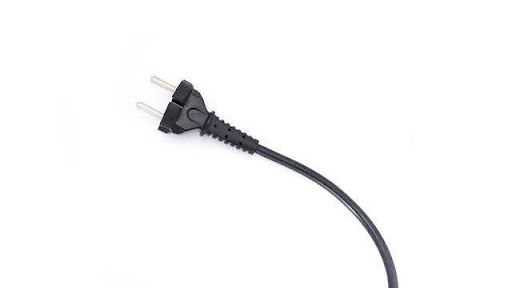
Pressmeddelande -
The Secret to Choosing the Right Power Cord For Expensive Electronics
Most power cords have an average lifespan of 3 to 5 years. However, some can last up to 20 years, depending on their quality and how well they’re taken care of.
This article shall uncover the top secrets when shopping for power cords for expensive appliances.
But first, let’s start by demystifying what these electrical attachments are.
Introducing a Power Cord
A power cord is a piece of electrical cable that connects electrical equipment to a power source.
High-end appliances typically come with a built-in power cord. However, the cable can be replaced if it’s irreparably damaged.
Many people use the terms “power cord” and “extension cord” interchangeably. But while both attachments let you connect appliances to an electrical outlet, they serve quite distinct functions.
An extension cord’s primary role is to extend the reach of electricity. They’re suitable where the devices that need powering are situated considerably further from the nearest outlet.
A power cord is also quite distinct from power strips, which denote electrical attachments with multiple outlets.
In a nutshell, extension cords let you power appliances located further away, while power strips enable the simultaneous connection of multiple devices. Meanwhile, a power strip is the cable that picks up electric current from a power source and sends it to the connected appliance. The source could be an extension cord, power strip, or a wall outlet.
Tips Before Buying a Power Cord
1. Determine That You Need a Power Cord
As mentioned, most high-end electrical appliances come with a pre-built power cord. Scrutinize the cable to determine if it is irreparably broken before seeking a replacement.
Loose connections are a tell-tale sign of a malfunctioning power cord. You could also visually inspect the cable for physical damage and use a multimeter to detect current flow.
2. Establish If You Need A Partial or Total Replacement
Each power cord has a plug. This is the pronged end that connects to a power source.
Sometimes, damage to a power cord is localized at the plugs. In that case, replacing the plug rather than the entire cable is best.
Power cord plugs are considerably easy to replace. Simply cut the older cable off, then attach the new plug by matching the three color-coded wires (Hot, Neutral, and Ground).
Factors to Consider While Shopping For Power Cords
1. Cable Length
Power cords used for indoor appliances aren’t meant to be too long. Aim for three feet (1 meter) or shorter.
Note that shorter power cords have superior current conductivity due to minimal voltage drop and lower resistance.
For outdoor appliances, you may choose a longer power cord or bridge the electricity gap using an extension cord. However, extension cables are only recommended for lighter-duty equipment.
2. Gauge Rating
Gauge denotes the thickness of a wire’s conductors. Smaller gauge ratings correspond with thicker wires, which consequently translates to superior current-handling abilities.
For instance, the conductors in 10-gauge wires are thicker than those in 14, 16, and 18-gauge cables.
10-gauge power cords are ideal for heavy-duty equipment like refrigerators. Comparatively, 16-gauge cables would best suit less power-hungry applications like lighting fixtures.
3. Ampacity
If finding a power cord of a proper gauge rating is proving a challenge, consider the cable’s ampacity instead.
Ampacity denotes the maximum current an electrical appliance can carry before the conductors heat up and possibly melt the insulation. It’s measured in amperes.
Choose a power cord whose amperage rating matches or slightly exceeds that of the devices you plan to connect it to.
4. Voltage
Voltage is the force or pressure that drives the currents through an electric circuit.
Like amperage, go for a power cord whose voltage matches or exceeds the voltage of the appliances you’ll be using it with.
Note that voltage drop theoretically translates to increased ampacity. This variance could cause your power cords to melt. Conversely, high-voltage cords can make your appliances run too fast and reduce their service life.
5. Insulation and Conductor Material
Polyvinyl chloride (PVC) is the gold standard for power cord insulation materials, balancing affordability and durability.
If you’ll be using a power cord in confined spaces where elasticity would be an add-on, consider one whose insulation is made from thermoplastic elastomer.
As for the conductor materials, the choice comes down to copper and aluminum. Copper is affordable, while aluminum boasts superior conductivity.
6. Shielding Requirements
Areas with heavy machinery, such as industrial centers and home workshops, experience high electromagnetic interference (EMI).
EMI disturbance can degrade a power cord’s signal and diminish its efficiency.
The best way to deal with electromagnetic interference is by opting for a shielded power cord. Copper is a preferable shielding material due to its magnetic and electrical noise resistance.
Wrap Up
Finding quality power cords is a monumental challenge. But with some research, you can get your hands on cables designed for optimal efficiency and durability.
Feel free to use this post as your handbook guide to shopping for the right power cord for your valuable appliances.
Remember, buying a quality power cord is only half the work. A robust care and maintenance plan is necessary to extend the cable’s longevity.
A critical maintenance procedure is to match a power cord with the right appliances, based on its rated power draw. Besides, install surge protectors, don’t twist or bend power cords, and unplug the cable when not in use.